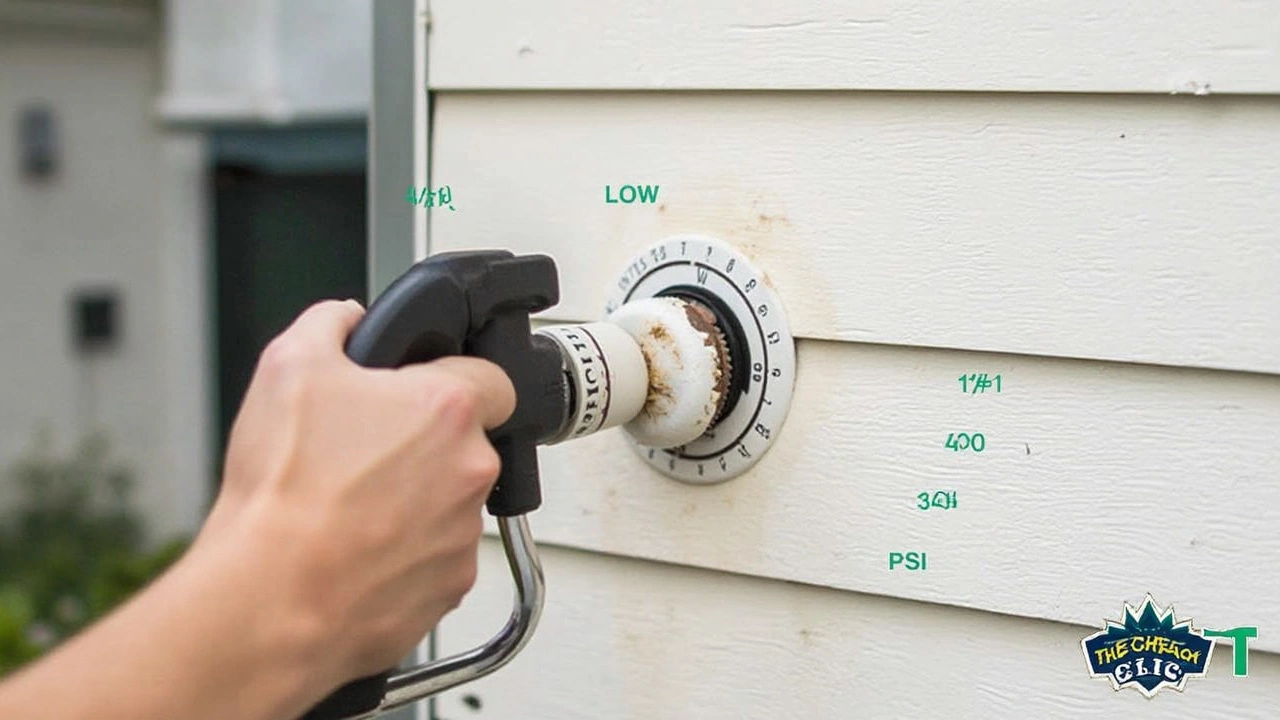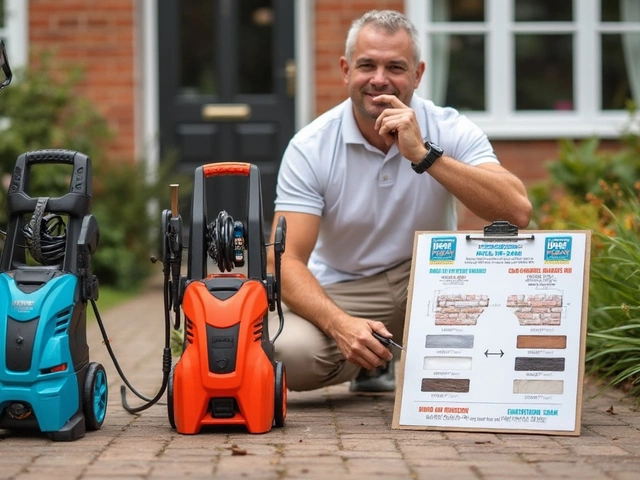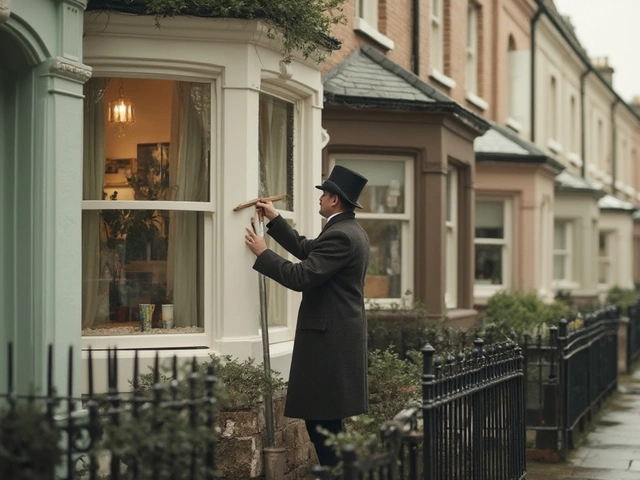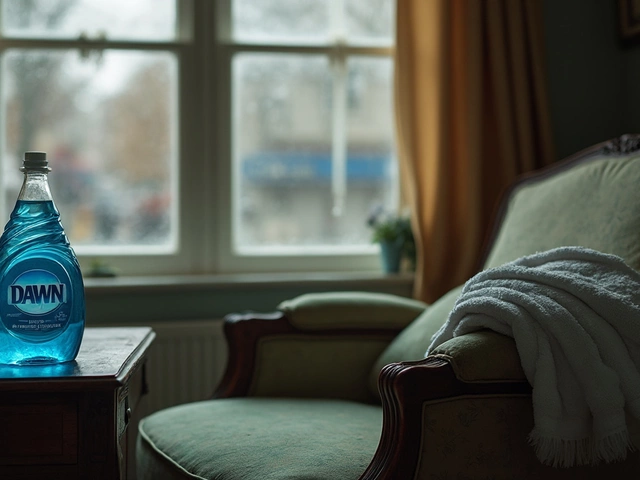Way too many people think cranking up the PSI on a pressure washer will get their house cleaner, faster. That’s a recipe for shredded siding, ruined paint, and even broken windows. PSI stands for “pounds per square inch”—it’s the muscle behind the water coming out of your sprayer. But more pressure doesn’t mean better cleaning, especially on your home’s exterior, which can be a lot more fragile than you think.
Most standard house siding—like vinyl, wood, or brick—can handle somewhere between 1,200 and 2,000 PSI. Anything higher, and you risk pushing water under siding, blowing off paint, or even leaving marks in wood or soft brick. So if you’re daydreaming about using a heavy-duty, 3,000 PSI machine just because your neighbor owns one, save yourself the headache (and money on repairs).
- What Exactly Is PSI?
- PSI Guidelines for Different House Materials
- Common PSI Mistakes People Make
- Pro Tips for Effective, Safe Pressure Washing
What Exactly Is PSI?
PSI, or pounds per square inch, is just a way of measuring how strongly water comes out of your pressure washer. It’s not a random number that looks fancy on a spec sheet—it actually tells you how hard the water is going to hit your house. So if your washer is advertised at 1,500 PSI, that means it pushes water out at 1,500 pounds of force spread over every inch the stream hits. More PSI equals more force, and that can be great or disastrous depending on what you’re cleaning.
For house washing PSI, knowing the number keeps you from doing something dumb like blasting off your paint or warping your siding. Most residential pressure washers you find on the shelf range from 1,200 up to 3,000 PSI, but that doesn’t mean you should just pick the biggest one. Each exterior material—think vinyl, wood, stucco, or brick—has its limit before things start to get damaged.
Here’s how PSI generally plays out:
- Low PSI (1,200-1,500): Perfect for softer materials or delicate surfaces, like painted wood or older brick.
- Mid PSI (1,500-2,000): Good all-around range for cleaning most vinyl siding or newer, harder exterior surfaces.
- High PSI (2,000+): For sturdy stuff only, like concrete walkways or metal. Never start here with your house siding.
Water pressure isn’t the only thing that matters, though. Nozzle choice, how close you spray, and your technique all play a part. But if you get the PSI wrong, you’ll have problems no matter how careful you are. So that number matters, big time.
PSI Guidelines for Different House Materials
Different surfaces need different levels of pressure if you want to keep them clean and damage-free. There’s no one-size-fits-all answer for house washing PSI. Here’s what works best for the most common exterior materials:
- Vinyl Siding: You’re good with 1,200 to 1,600 PSI. It’s sturdy enough, but go too high and you’re likely to leave marks or force water under the panels.
- Wood Siding: Way softer than vinyl. Stick to 1,000 to 1,300 PSI and always keep extra distance. Using more can splinter the wood or strip paint right off.
- Brick and Masonry: 1,500 to 2,000 PSI does the job. It’s tempting to go higher, but you’re more likely to chew out mortar than blast away dirt, especially on older homes.
- Stucco: It’s fragile—900 to 1,200 PSI max, and spray at an angle, not head-on. Blasting stucco can create holes or break off chunks.
For a quick comparison, check out the handy table below. It’s straight from recent industry guidelines (including the Power Washers of North America):
| Material | Recommended PSI Range |
|---|---|
| Vinyl Siding | 1,200 – 1,600 PSI |
| Wood Siding | 1,000 – 1,300 PSI |
| Brick/Masonry | 1,500 – 2,000 PSI |
| Stucco | 900 – 1,200 PSI |
These aren’t just numbers to follow blindly. Always test a small hidden spot first, because even within these ranges, factors like age, paint type, and weather wear can change what your house can handle. If you’re ever unsure, go lower and only raise the PSI if you’re getting nowhere. Remember, patience costs less than a surprise repair bill.

Common PSI Mistakes People Make
The biggest problem with pressure washing a house isn’t that people don’t have enough pressure — it’s that they go overboard. When you use too much PSI, you’re not just cleaning better. You’re stripping paint, cracking siding, and sometimes even forcing water behind the walls, which can lead to mold. Here’s the kicker: somewhere around 25% of homeowner insurance claims for exterior damage in the past five years have involved improper power washing.
One classic mistake is grabbing a rental machine set at 3,000 PSI and treating it like a Swiss army knife. That’ll clean a sidewalk, but a house siding? You’re asking for disaster. Lower settings are almost always better — especially if you’re using a smaller tip (which actually boosts pressure further without you realizing it).
- house washing PSI: Folks forget that each material needs its own setting. Vinyl is not brick. Wood is delicate. Set the PSI too high and you’ll gouge wood in seconds.
- Poor distance control: Spraying too close ups the force (PSI is about the pressure at the nozzle), which means standing one foot away can double the impact versus spraying from three feet out.
- Nozzle confusion: Most people don’t realize that a narrow red 0° nozzle is a literal paint stripper. Use the wider white (40°) or green (25°) nozzle on siding, and leave the red one for concrete stains.
- Ignoring leaks: Higher PSI can blow water into tiny cracks and force leaks, damaging insulation or wiring behind your walls.
Here’s a quick look at recommended PSI for common house surfaces:
| Surface | Recommended PSI | What Goes Wrong If Too High |
|---|---|---|
| Vinyl Siding | 1,200 - 1,600 | Bent, cracked, or loosened panels |
| Wood Siding | 1,200 - 1,500 | Splinters, grooves, water pushed under surface |
| Brick | 1,500 - 2,000 | Mortar damage, crumbling joints |
| Stucco | 1,100 - 1,300 | Chipping, surface holes, leaks |
Moral of the story? Start low and work up. If the dirt doesn’t budge, raise the PSI a little at a time — don’t double it. Always use the widest nozzle unless you have caked-on gunk on a hard surface. It’s tempting to think bigger is better, but with pressure washing, smart and steady wins the race.
Pro Tips for Effective, Safe Pressure Washing
Want to get your house clean without damaging it? Here’s what really helps when working with a pressure washer. First, always start on a lower PSI and test a small hidden spot. Cranking it up right away means you won’t see a mistake until it’s too late. Dirt and green stuff usually come off with 1,200–1,500 PSI, especially if you use the right cleaning solution.
Pick the right nozzle. The green 25-degree tip spreads the water enough to clean without gouging. Avoid the red 0-degree nozzle—it's basically a knife. For second floors or tough spots, use an extension wand instead of getting too close or turning up the power.
- Hold the spray at a slight angle, not straight-on. This lifts grime but won’t force water under your siding.
- Keep at least a foot between the nozzle and your house. Too close can peel paint or mark your siding.
- Always move in a steady side-to-side motion. Lingering in one spot risks leaving stripes or scarring.
If you’re using soap or detergent, choose one made for house washing PSI levels and exteriors. Let it sit a few minutes before rinsing—don’t let it dry on the surface. Work from top to bottom so dirty water doesn’t drip onto already-cleaned spots.
Last thing: Cover electrical outlets and plants. Turn off outdoor power if you can. Pressure washers don’t mix well with plugs and bushes that can’t shake off strong sprays. Your house will end up cleaner and you won’t spend the weekend fixing avoidable mistakes.




